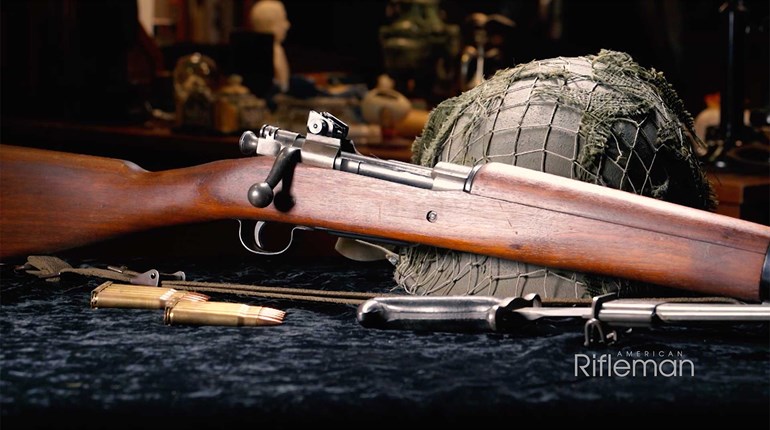
The AR-15 just doesn’t get the credit it deserves as a hunting rifle. Sadly, far too many sportsmen have drunk the media Kool-Aid and believe it deserves no place in the field. Truth be told, I’ve put more deer and coyote on my wall with this design than all other firearms combined; and, of course, let’s not forget its utility as a varmint rifle. I have fed buzzards from the valleys of Pennsylvania to the hills of South Dakota with Stoner’s famous creation and don’t ever see a reason to change that. Whenever I am given the option, a high-quality AR-15 is typically my first choice of field companion, especially purpose-built machines like the Rock River Arms All Terrain Hunter.
Known for its product’s accuracy, the ATH is built with a ¾ MOA guarantee. To visualize this, that’s three shots touching the outside of a dime placed on the opposite end of a football field. Rock River can make this claim because the ATH is the culmination of carefully selected parts built to extraordinarily tight tolerances. Starting with the barrel, RRA opted for stainless steel construction, as they knew it would likely see some weather. Cut to an intermediate length of 18 inches, it runs a mid-length gas system, making this profile remarkably reliable. In my experience, firearms featuring barrels of this nature provide better accuracy than carbine-length ones and aren’t as cumbersome as units wearing rifle-length launch tubes. As we learned in kindergarten, it’s what’s inside that counts, and on that measure, Rock River gets a gold star for its work. Opting for a .223 Wylde chamber, this makes the ATH equally compatible with .223 Remington as it is with 5.56 NATO. Good news, considering we have been in a “get what you can” type of ammo market for the last few years. This chamber precedes some excellent 1:8-inch rifling that stabilizes all but the heaviest .223 diameter pills you can expect to run through it.

A quality barrel is pointless unless it is allowed to float. To that end, the All Terrain Hunter is fitted with a free-float handrail that is clad with 270 degrees of M-LOK slots and a full-length Picatinny rail up top. This gives us enough real estate for game lights, bipods and thermal imaging devices with just about any practical scope you care to mount. Just like the receiver set, the handrail is made from T6 aluminum, making it lightweight and weather-resistant.
Working back to the receiver set, we see the now standard “flat-top” upper, which has phased out the traditional carry handle in favor of an integral Picatinny rail. Although this is one of the newest AR-15s on the market, it was refreshing to see that RRA didn’t jump on the bandwagon of eliminating dustcovers, brass deflectors and forward assists on this model. While I can live without them on the range, these features are essential in the field. I want my action covered if I’m not shooting (which is all but a few seconds of most hunts). Additionally, when I load up before first light, I like having the loaded-chamber confidence that can only be brought about by smacking the forward assist. Lastly, as a lefty, I appreciate the brass deflector. Righties should, too, as there is no guarantee that you’ll be able to take a shot off your shoulder of choice.
Although the upper of an AR-15 is important, all the magic happens in the lower. The All Terrain Hunter is built with enlarged controls to accommodate gloved hands or fumbling fingers stricken with buck fever. These include a stretched-out trigger guard and the extended STAR safety selector. Attached to the rear is a six-position carbine receiver extension, paving the way for the adjustable CAR buttstock. This unique design features a water-tight storage compartment that can be accessed by sliding down the oversized, coarsely textured butt pad. As an aside, it locks into several positions along the way, offering another avenue of adjustability to help create a perfect fit for your unique shape and whatever clothing or gear you might need to work around. It also has two bilateral sling points allowing you to carry the ATH however you feel most comfortable. Lastly, the lower is home to one of the best bang switches on the market, the RRA Two-Stage Ultra Match Varmint trigger. Before hitting the range, I measured it on a Lyman digital trigger gauge and recorded a clean break at just 3 pounds, 9 ounces, which is a big help when you need to snap a shot off quickly or are shooting in a less-than-perfect position.
Range day was preceded by the 10-minute process of attaching an EOTech Vudu 1-10x28mm optic to the pic rail via a pair of Talley rings. This setup gave me a low profile and allowed me to toggle between a mid-range magnification or an unrestricted field of view. Once the hardware was torqued down, I finished setting up a bench rest position and set out to see if this rig could pull off the .75-inch 100-yard groups that it advertises. At my disposal were hunting rounds from Hornady and Nosler and match-grade ammunition from Sierra. As I zeroed the optic, I got to experience the difference the included Operator muzzle brake makes on the entire shooting experience. Although the .223 Rem. doesn’t kick much to begin with, this made it feel like I was shooting a .22 LR. That tells me that if I were to plant a shot on a deer, I’d get to see my impact and tell which way it ran or if it dropped right there. Some might squawk at the thought of deer hunting with a .223 Rem. but with the right bullet and a good shot, it quickly becomes one of the most humane experiences you’ll ever have in the woods. It’s also an excellent way to preserve as much meat as possible. The Hornady CX ammunition easily falls into that category, and through my test sample, I was able to put together groups as small as .89 inch. Believe it or not, that wasn’t the tightest group of the day. Nosler’s Varmageddon rounds printed groups as small as .60 inch, satisfying the ¾ MOA guarantee in spades. Sierra’s round also answered the call, proving that the All Terrain Hunter could handle heavier pills with impunity.
I ended the day by shooting the ATH in more realistic shooting scenarios, including improvised support and free-hand standing. Even in these positions, I was able to spot impacts and put rounds onto 3-MOA targets as far out as 300 yards. Throughout the entire test, I enjoyed trouble-free feeding, firing, ejection and butter-smooth reloads. My day ended with the exhaustion of six boxes of ammunition, far too few if you ask me. The All Terrain Hunter was nothing short of a pleasure to run, and it can easily fill the roles of a target and recreational rifle as well. When you consider the versatility of the design and the field-friendly features, it’s plain to see that this gun is going to see a lot of time outside the safe, regardless of what’s in season.

Technical Specifications
• Type: gas-operated semi-automatic rifle
• Caliber: .223 Wylde
• Magazine: steel; detachable box; 20-rnd. capacity
• Barrel: match grade, stainless steel; 18"; heavy contour; button rifled; 1:8" RH twist; threaded ½x28; cryogenically treated; Operator muzzle brake
• Gas System Length: mid-length
• Trigger: RRA Two Stage Ultra Match Varmint; 3-lb., 9-oz. pull weight
• Sights: none; Picatinny rail integral to receiver for mounting optics
• Safety: STAR two-position rotating lever
• Stock: RRA Operator CAR Telescoping Stock; LOP adjustable 11"–14¾"; RRA 13" Extended Lightweight Free-Float Rail Handguard
• Metal Finish: hard anodizing
• Overall Length: 35¼"–39"
• Weight: 7 lbs., 9.6 ozs.
• Accessories: case
• MSRP: $1,425; rockriverarms.com





































